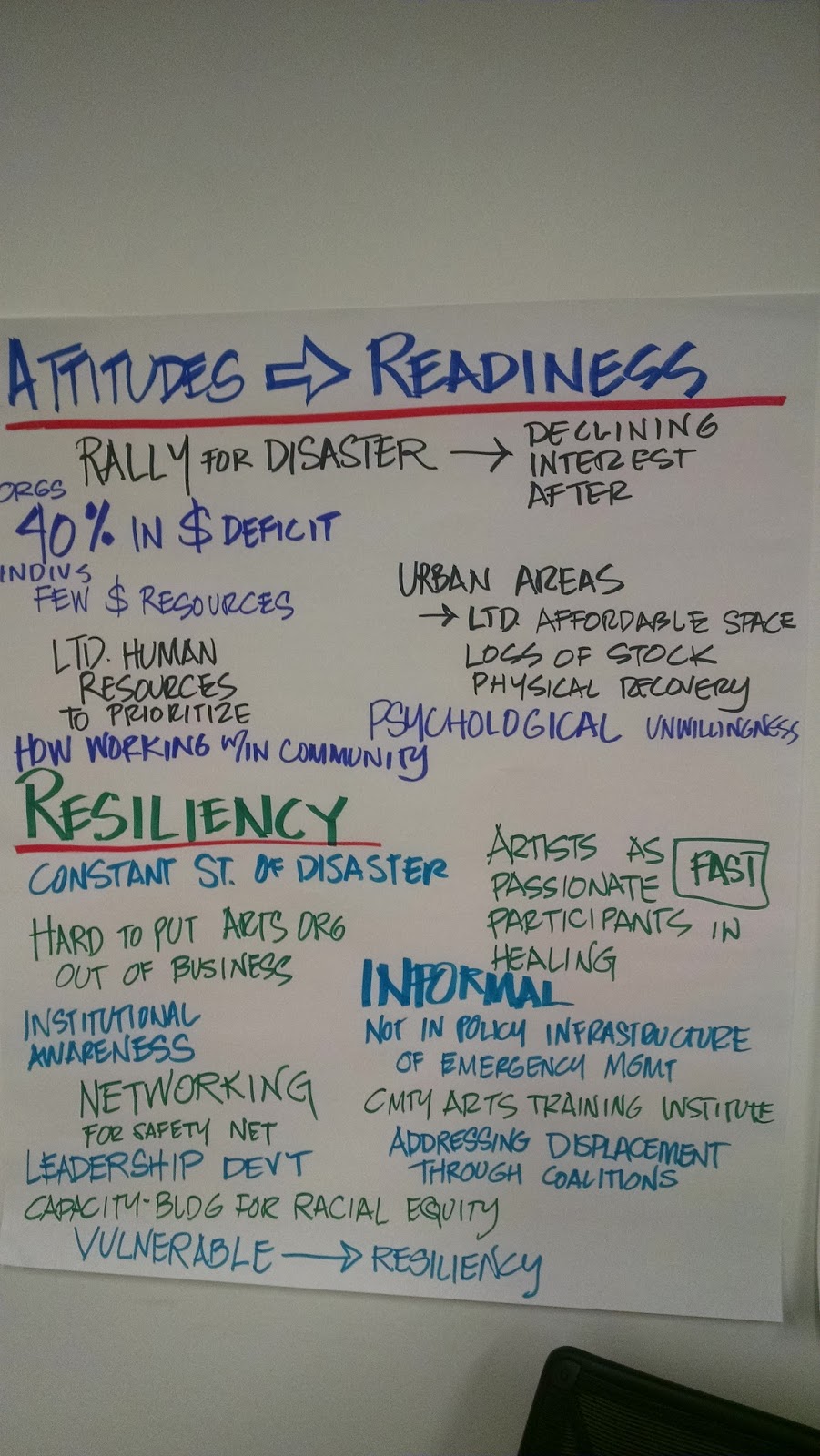
Never Underestimate the Power of Preparation!
Earlier this week, the Blog featured a post by Sarah Sutton about a recent conference addressing the preservation challenges of rising sea levels. However, climate change is altering the landscape of risk in many ways: drought and fire can be as dangerous as water. And it’s not just a matter of climate change—evidence suggests that hydraulic fracturing is increasing the frequency and severity of earthquakes in some regions. All of which reminds museums, as preservationists, to stay up-to-date on risk management and emergency response. In today’s post, AAM’s Information Manager, Cecelia Walls, reports on a recent conference here in DC addressing that need.
 Imagine you’ve just been informed that a wildfire is 20 miles from your museum and headed straight for you, or that hurricane Adam is expected to hit your town within the next 24 hours, or that there is a leak in the basement. What would you do? Are you prepared?
Imagine you’ve just been informed that a wildfire is 20 miles from your museum and headed straight for you, or that hurricane Adam is expected to hit your town within the next 24 hours, or that there is a leak in the basement. What would you do? Are you prepared? At the National Endowment for the Arts (NEA) Readiness and Resiliency convening held on April 19th, twenty-two leaders from across the country came together to discuss the state of emergency preparedness in the arts and cultural community. The forum’s goal was to determine how best to advance more collaborative and comprehensive emergency strategies for arts and cultural organizations and individuals.
 After listening to my fellow participants I realized that, while museums are not perfect, many already have systems of risk assessment and management in place. Still, there is room for improvement.
After listening to my fellow participants I realized that, while museums are not perfect, many already have systems of risk assessment and management in place. Still, there is room for improvement. Why is Readiness important?
Preparing for disaster is one of the most important things you can do to safeguard your collections, staff, and visitors from potential hazards.
Developing a strong disaster plan and identifying, understanding, and preparing for risks, are vital parts of museum management. By having a current and practiced plan in place you can alleviate some of the physical and financial repercussions in the wake of a disaster.
That is why AAM developed key resources and required elements for disaster planning to help your organization prepare for potential disasters. One such resource is the Developing a Disaster Plan Reference Guide.
There are six essential components of every disaster plan that we call the Required Elements. These are that the plan:
- Is tailored to the institution’s current facilities and specific circumstances
- Covers all threats/risks relevant to the institution
- Addresses staff, visitors, structures and collections
- Includes evacuation plans for people
- Specifies how to protect, evacuate or recover collections in the event of a disaster
- Delegates responsibility for implementation
It is often difficult for cultural institutions to set aside financial and physical resources to prepare for a disaster that may never come, but it is vital to know that if and when something does happen the organization is ready and willing to recover.
Having a plan that is up-to-date and rehearsed can help the museum respond and recover more quickly. This leads to the second element of the convening.
What exactly is Resiliency?
It is the museum’s ability to recover, survive, and thrive after a disaster – to be resilient. Not only to be resilient within the organization, but to be able to respond to the needs of the community as well. Growing a system of support throughout the community is essential.
How the community perceives the museum is important to understand. No museum exists in a vacuum. We need to rely on our supporters and our supporters need to rely on us in times of crises.
The more the community can come together quickly to provide support for all those in need, the easier it is to recover.
Developing relationships with first responders, like police and emergency workers, and working with them before disaster strikes can make all the difference in recovery efforts. Creating lists of suppliers and potential places to store objects or places to shelter animals in times of need are a must. These are resources we need to cultivate in order to be resilient.
So what now?
At AAM, we believe it’s possible for every museum to have regularly updated and practiced disaster plans in place, to set aside financial and physical resources in case disaster happens, and to have a system of support at the ready.
It takes work, it takes preparation, but in the end it allows all of us to stand up and say, “I know what to do, where to go, to whom to turn!” when needed.
So, like the Boy Scouts say, always “Be Prepared!”
A few facts about AAM, museums, and disaster preparedness:
- Disaster preparedness is a requirement for accreditation, and has been since its inception in 1970
- AAM has 11 webpages dedicated to disaster preparedness and recovery resources
- The disaster preparedness/emergency recovery plan is one of our 5 Core Documents
The InformationCenter provides resources to Tier 2 and Tier 3 museum members as well as all individual members thorough the online Resource Library. Cecelia provides Tier 3 museum members with customized reference services, upon request, and these museums also have access to our new online Sample Document library.









AAM along with the Texas Historical Commission and the Texas Association of Museums will present four workshops in Texas about the 5 core documents every museums needs including a disaster preparedness plan.
Dates and Locations:
Wednesday, July 13: Lubbock, Silent Wings Museum
Friday, July 15: Dallas, The Sixth Floor Museum
Wednesday, November 9: Austin, Bullock Texas State History Museum
Friday, November 11: Beaumont, The McFaddin-Ward House
Registration is currently open and available on the Texas Association of Museums website http://www.texasmuseums.org/words-to-live-by-workshop-registration.html.